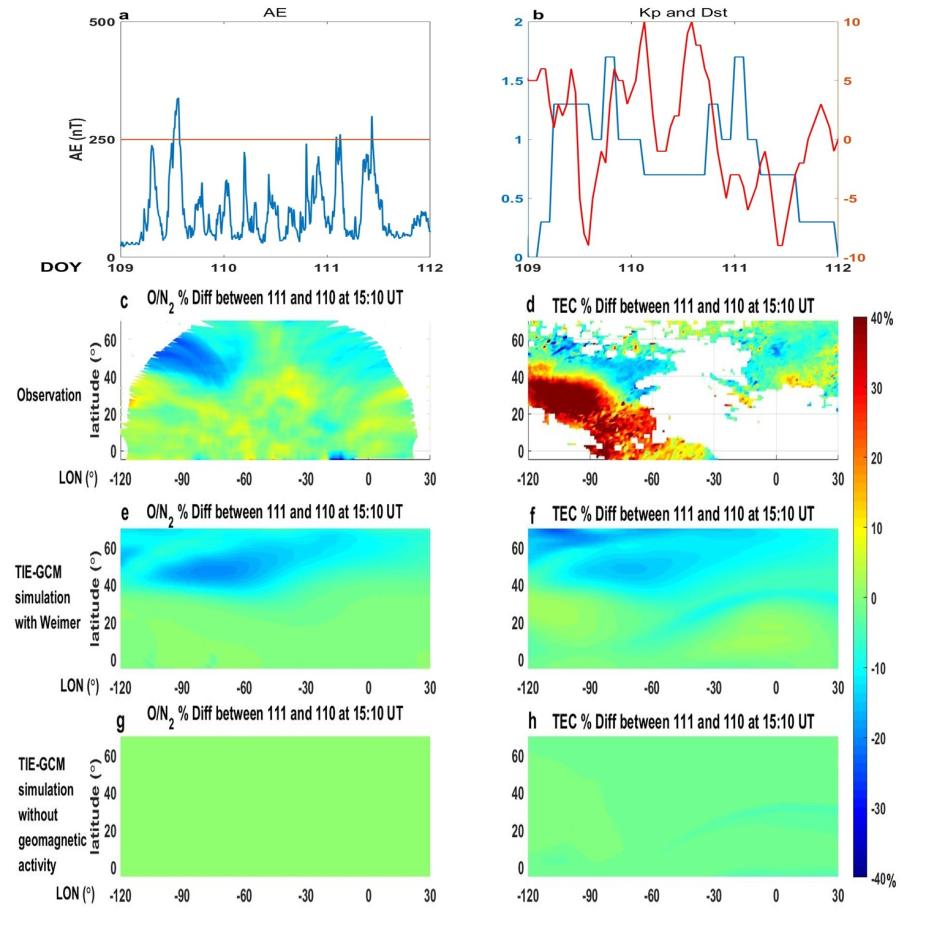Publication name: Geophysical Research Letters; Authors: Xuguang Cai, Alan G. Burns, Wenbin Wang, Liying Qian, Nicholas Pedatella, Anthea Coster, Shunrong Zhang, Stanley C. Solomon, Richard W. Eastes, Robert E. Daniell, William E. McClintock
We conducted observational and modeling studies of thermospheric composition and ionospheric total electron content (TEC) variations during two geomagnetically quiet periods (maximum Kp=1.7) at solar minimum. Daytime thermospheric O and N2 column density ratio (∑O/N2) observed by Global-scale Observations of the Limb and Disk (GOLD) and TEC from a network of ground-based Global Navigation Satellites System receivers both exhibited large (∼30% of reference values) and long-lived (5-11 hours) day-to-day variations in roughly the same mid-latitude geographic regions.

a) AE index and b) Kp and Dst between DOY 109 and 112. The percentage difference of observed c) ∑O/N2 and d) TEC between DOY 111 and 110 at 15:10 UT. The corresponding percentage difference of ∑O/N2 and TEC simulated by TIE-GCM with Weimer (e and f) and TIE-GCM without Weimer (g and h)
Numerical simulations replicated the observed variability, though not perfectly. Analysis of the simulations suggested that the variations were mainly generated in the high-latitudes, and were subsequently advected equatorward and westward. When high-latitudes input was turned off in simulations, the variations were negligible. This suggested the potentially important role of high-latitude geomagnetic forcing in thermospheric composition and ionospheric density variations at mid-latitudes even during some ‘geomagnetically quiet’ periods at solar-minimum.